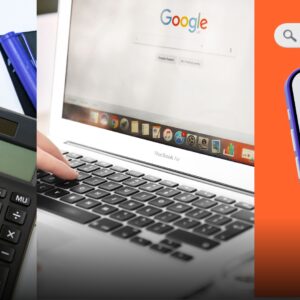Imagine you’re a small business owner selling handmade candles. You’ve got a great product, but how do you reach customers beyond your local market? Enter digital marketing—a powerful set of tools and strategies that lets you connect with audiences worldwide using the internet. From posting on social media to running targeted ads, digital marketing is the engine driving modern business growth.
But what exactly is digital marketing, and how does it evolve from simple tactics to sophisticated campaigns? Whether you’re a curious beginner, a small business owner, or a seasoned marketer, this guide will walk you through the basics, intermediate strategies, and advanced techniques of digital marketing. By the end, you’ll have a clear roadmap to start or scale your digital efforts. Let’s dive in!
Word count target: ~2,000 words
The Basics of Digital Marketing
What is Digital Marketing?
At its core, digital marketing is the promotion of products, services, or brands using digital channels. Unlike traditional marketing—think newspaper ads or radio spots—digital marketing leverages the internet, mobile devices, and data-driven tools to reach audiences where they spend most of their time: online.
Digital marketing is versatile, measurable, and accessible. A local coffee shop can use Instagram to showcase its lattes, while a global tech company can run Google Ads to launch a new product. The beauty of digital marketing lies in its ability to scale with your goals and budget.
Why Digital Marketing Matters
- Cost-Effective: Compared to TV commercials, digital campaigns like social media ads are affordable, even for startups.
- Measurable Results: Tools like Google Analytics show exactly how many people clicked your ad or visited your site.
- Targeted Reach: You can pinpoint your audience by age, location, interests, or behavior.
- Global Access: Reach customers across the globe without leaving your desk.
For example, a yoga studio might spend $50 on Facebook Ads to promote a beginner’s class, targeting women aged 25–40 within a 10-mile radius. Within days, they see 20 new sign-ups, proving the campaign’s success.
Core Components of Digital Marketing
Here’s a breakdown of the foundational pillars:
- Search Engine Optimization (SEO)
SEO is the art and science of making your website rank higher on search engines like Google. By optimizing content with relevant keywords (e.g., “best handmade candles”), you attract organic (free) traffic.
Example: A blog post titled “10 Ways to Create a Cozy Home” could rank for “cozy home ideas,” driving visitors to your candle shop. - Content Marketing
This involves creating valuable content—blogs, videos, infographics—to attract and engage audiences. Content builds trust and positions you as an expert.
Example: A skincare brand might publish a YouTube video on “Morning Skincare Routines” to showcase their products subtly. - Social Media Marketing
Platforms like Instagram, X, TikTok, and LinkedIn let you build communities, share updates, and run ads. Each platform suits different audiences.
Example: A fashion retailer uses Instagram Reels to show outfit ideas, while a B2B software company shares case studies on LinkedIn. - Email Marketing
Email campaigns nurture leads and retain customers with personalized messages, like discounts or product updates.
Example: An online bookstore sends a “Your Wishlist is on Sale!” email, prompting customers to buy. - Pay-Per-Click (PPC) Advertising
PPC ads appear on search engines or social platforms, and you pay only when someone clicks. Google Ads and Facebook Ads are popular platforms.
Example: A pet store runs a Google Ad for “dog toys,” appearing at the top of search results. - Affiliate Marketing
You partner with influencers or websites who promote your product for a commission.
Example: A fitness app pays bloggers to review their app, earning a cut for each sign-up. - Online Public Relations (PR)
This includes managing your brand’s reputation through digital press releases, guest posts, or influencer collaborations.
Example: A tech startup gets featured in a Forbes article, boosting credibility.
Getting Started as a Beginner
If you’re new to digital marketing, start small:
- Create a free Google My Business profile to appear in local searches.
- Post consistently on one social media platform where your audience hangs out.
- Write a simple blog post with a keyword related to your business.
- Experiment with a $10 ad budget on Facebook or Google to learn what works.
Tip: Focus on one or two channels initially to avoid overwhelm. Consistency beats perfection.
Intermediate Digital Marketing Strategies
Once you’re comfortable with the basics, it’s time to build a cohesive strategy. Intermediate digital marketing focuses on integration, audience understanding, and data-driven decisions.
1. Set Clear Goals
Every campaign needs a purpose. Common goals include:
- Brand Awareness: Get more people to know your brand (e.g., increase X followers).
- Lead Generation: Collect emails or inquiries (e.g., via a free eBook download).
- Sales/Conversions: Drive purchases or sign-ups (e.g., through a discount code).
- Customer Retention: Keep existing customers engaged (e.g., with loyalty emails).
Example: A bakery sets a goal to increase online orders by 20% in three months using Instagram ads and email campaigns.
2. Understand Your Audience
Knowing your audience is critical. Use tools like:
- Google Analytics: Tracks website visitors’ age, location, and behavior.
- Social Media Insights: Shows who engages with your posts (e.g., Instagram’s audience demographics).
- Surveys: Ask customers directly about their preferences.
Create buyer personas—fictional profiles of your ideal customers. For instance:
- Name: Sarah, 32, working mom.
- Interests: Healthy recipes, yoga, sustainable products.
- Pain Points: Limited time, seeks convenience.
- Channels: Instagram, Pinterest, email.
Tailor your content to Sarah’s needs, like quick recipe videos or time-saving product tips.
3. Integrate Multiple Channels
A multi-channel approach amplifies your reach. For example:
- Write a blog post about “Eco-Friendly Gift Ideas” (content marketing).
- Share it on X and Pinterest (social media marketing).
- Send an email newsletter linking to the post (email marketing).
- Run a Google Ad targeting “sustainable gifts” (PPC).
Case Study: A travel agency promotes a “Top 10 European Destinations” blog post. They share it on Instagram, email it to subscribers, and run a $100 Facebook Ad campaign. The post gets 5,000 views, 200 email sign-ups, and 10 tour bookings.
4. Master Analytics
Data tells you what’s working. Key metrics include:
- Click-Through Rate (CTR): Percentage of people who click your ad or link.
- Conversion Rate: Percentage who complete a desired action (e.g., purchase).
- Return on Ad Spend (ROAS): Revenue generated per dollar spent on ads.
Use tools like Google Ads, Meta Business Suite, or HubSpot to track performance. If an ad’s CTR is low, tweak the headline or image. If conversions are poor, optimize your landing page.
5. Optimize for Mobile
Over 60% of web traffic comes from mobile devices. Ensure your website, emails, and ads are mobile-friendly:
- Fast-loading pages (use Google’s PageSpeed Insights to check).
- Clear, thumb-friendly buttons.
- Responsive email templates.
Tip: Test your website on your phone to spot issues.
Advanced Digital Marketing Techniques
Advanced digital marketing is about scaling impact with cutting-edge tools, automation, and hyper-personalization. These strategies require more investment but deliver exponential results.
1. Programmatic Advertising
Programmatic ads use AI to buy ad space in real time, targeting specific audiences across websites, apps, or streaming platforms. For example, a car dealership can show ads to people who recently searched “best SUVs” while they browse news sites.
How it works: Platforms like Google Display Network or The Trade Desk use data (e.g., browsing history) to serve ads instantly.
Benefit: Precise targeting at scale.
Challenge: Requires budget and expertise to optimize.
2. Marketing Automation
Automation tools like HubSpot, Marketo, or Mailchimp streamline repetitive tasks:
- Send welcome emails to new subscribers.
- Segment audiences based on behavior (e.g., “cart abandoners”).
- Schedule social posts months in advance.
Example: An online course platform uses automation to send a 5-email sequence to new leads, offering a free webinar, testimonials, and a discount. This converts 15% of leads into paying customers.
3. Artificial Intelligence (AI) and Machine Learning
AI transforms digital marketing by:
- Personalizing Content: Netflix’s recommendation engine suggests shows based on your history.
- Predictive Analytics: Tools like Salesforce predict which leads are likely to buy.
- Chatbots: AI-powered bots on website answer FAQs 24/7, freeing up staff.
Example: A retail brand uses AI to analyze purchase data, recommending “matching accessories” to customers, boosting average order value by 25%.
4. Omnichannel Marketing
Unlike multi-channel marketing, omnichannel creates a seamless experience across all touchpoints—website, app, social, email, and even offline stores.
Example: A customer browses shoes on a retailer’s app, receives a cart reminder via email, sees a retargeting ad on Instagram, and buys in-store using a coupon from the app. Every step feels connected.
Tools: Shopify Plus or Adobe Experience Cloud integrate omnichannel journeys.
Benefit: Higher customer satisfaction and loyalty.
Challenge: Requires unified data and significant setup.
5. Challenges and How to Overcome Them
Digital marketing isn’t without hurdles:
- Ad Fatigue: Audiences ignore repetitive ads. Rotate creatives and test new formats (e.g., video vs. static images).
- Privacy Regulations: GDPR and CCPA limit data use. Be transparent, use consent forms, and explore zero-party data (e.g., quizzes where users share preferences).
- Algorithm Changes: Google or Instagram updates can affect visibility. Diversify channels and focus on owned assets (e.g., email lists).
- Budget Constraints: Outbid by bigger brands? Target niche audiences or use organic strategies like SEO and content.
6. FutureAdvanced TrendsSEO
Beyond basics, advanced SEO includes:
- Technical SEO: Optimize site speed, crawlability, and structured data (e.g., schema markup for rich snippets).
- Voice Search Optimization: Target conversational queries for voice assistants (e.g., “What’s the best pizza near me?”).
- Local SEO: Claim your Google Business Profile, encourage reviews, and add location-based keywords.
Example: A restaurant optimizes for “vegan pizza Boston,” uses schema markup for menus, and ranks in Google’s “Local Pack,” driving 50% more foot traffic.
7. Data-Driven Personalization
Use CRM systems (e.g., CRMs like Salesforce) to tailor experiences. For exampleExample, Spotify’s “Wrapped” campaign shares personalized listening stats, creating viral engagement.
Tip: Start small with personalization, like addressing emails by name or recommending products based on browsing history.
Future Trends and Challenges
Emerging Trends
Digital marketing evolves constantly. Stay ahead with these trends:
- Metaverse Marketing: Brands like Coca-Cola are experimenting with virtual stores in platforms like Decentraland.
- Video Dominance: Short-form videos (e.g., TikTok, YouTube Shorts) drive massive engagement.
- Zero-Party Data: With cookies phasing out, brands use interactive content (e.g., surveys) to collect data ethically.
- AI-Generated Content: Tools like Jasper AI assist in creating blog drafts or ad copy, but human oversight ensures quality.
- Sustainability Marketing: Consumers value eco-conscious brands. Highlight green practices in campaigns.
Practical Example: Putting It All Together
Let’s tie it all together with a fictional case study:
Business: EcoGlow Candles, a sustainable candle brand.
Goal: Increase online sales by 50% in six months.
- Basic Tactics:
- Optimize website for “sustainable candles” (SEO).
- Post daily Instagram Reels showing candle-making (social media).
- Send weekly emails with self-care tips (email marketing).
- Intermediate Strategy:
- Create a blog series on eco-friendly home decor (content marketing).
- Run $200/month Google Ads targeting eco-conscious women aged 25–45 (PPC)).
- Use Google Analytics to track conversions and refine ad copy.
- Advanced Techniques:
- Use programmatic ads to retarget website visitors across blogs.
- Automate email sequences for cart abandoners with a 10% discount code.
- Implement omnichannel by syncing online and pop-up shop experiences.
- Optimize for voice search (“eco-friendly candles near me”).
Results: EcoGlow sees a 60% sales boost, 5,000 new email subscribers, and a 40% repeat customer rate.
Conclusion
Digital marketing is a journey—from posting a single tweet to orchestrating AI-powered campaigns. Beginners can start with a social media profile or a small ad budget, while Intermediate marketers integrate channels and dive into data. Advanced practitioners harness automation, personalization, and emerging tech to dominate markets.
The best part? Digital marketing is accessible to everyone. Whether you’re a solo entrepreneur or a global brand, there’s a strategy for you. Start by auditing your current online presence, picking one tactic to improve, or experimenting boldly. What’s your next move in digital marketing? Share your goals below, and let’s spark some ideas!







